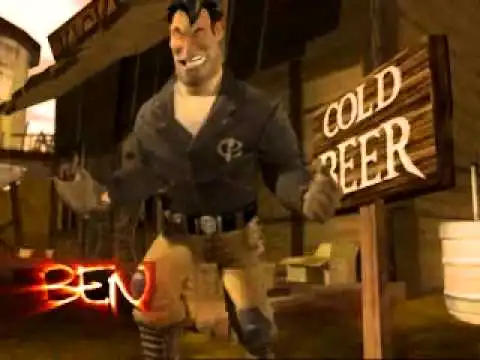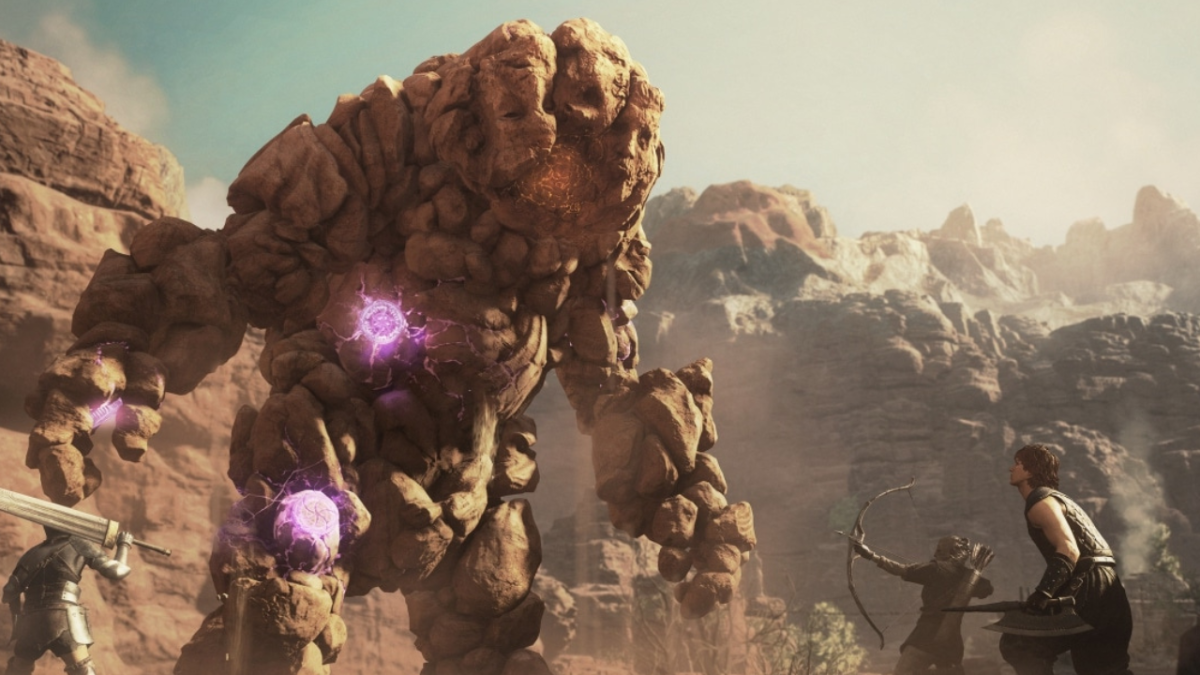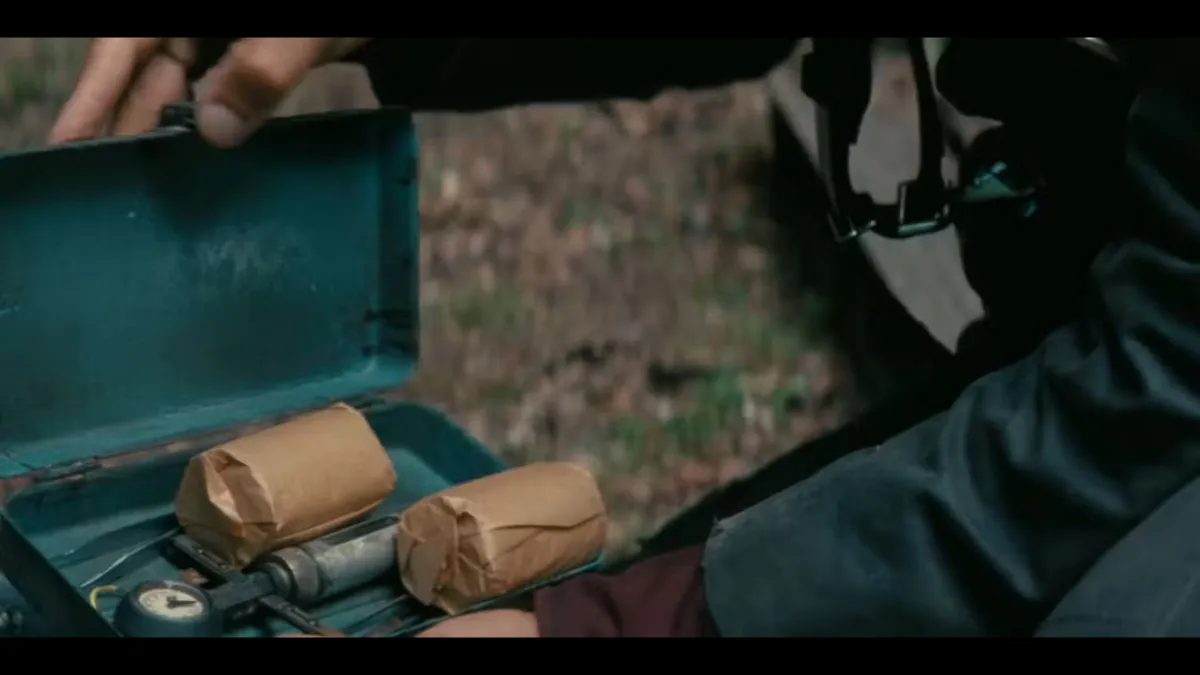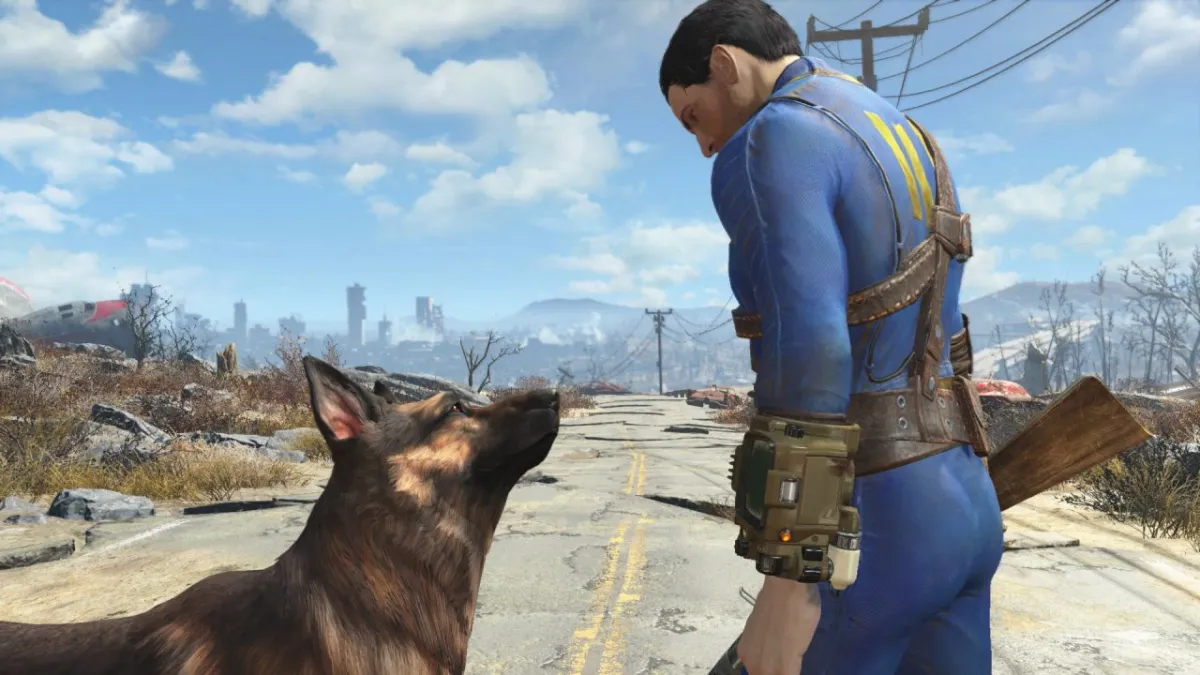
Tim: LucasArts is no more.
For anyone who played games in the 90s, this is a spectacularly sad occasion. While the last decade saw the entertainment giant spending an awful lot of time licensing out Star Wars and getting back games that, for the most part, weren’t particularly good, there was a point when a LucasArts release date was one of the most exciting days of the year. This is a company that, for years, defined adventure games, and if you take into account their non-adventure output, like X-Wing, it’s not a stretch to say that they helped define gaming for an entire generation of PC gamers. It’s a company that helped develop the careers of a number of gaming luminaries, Ron Gilbert and Tim Schafer being among the more famous. It’s a company that, to a whole lot of people, mattered.
We here at IncGamers have all played LucasArts games, and we all have fond memories of particular titles – most of which you’ll expect, some of which you might not. But this article isn’t so much a retrospective on the glory days of LucasArts, or even a retrospective on their games, but more what the glory days of LucasArts meant to us. So yes, we’ll be talking about Sam & Max and Day of the Tentacle, but we’ll be explaining why they’re important to us as individuals. This is about our personal relationship with the games developed or published by what was once one of the most important companies in PC gaming.
This, in a sense, is our eulogy for LucasArts.
Monkey Island 2: LeChuck’s Revenge
 Peter: The Amiga version of Monkey Island 2 came on 11 discs (plus one for saved games.) Can you even begin to imagine what a hassle that was for me to copy to some blank floppies of my own? Christ, I even had to rope in one of my parents to photocopy the stupid code-wheel device, making them an accessory to my crime in the process.
Peter: The Amiga version of Monkey Island 2 came on 11 discs (plus one for saved games.) Can you even begin to imagine what a hassle that was for me to copy to some blank floppies of my own? Christ, I even had to rope in one of my parents to photocopy the stupid code-wheel device, making them an accessory to my crime in the process.
Er, just out of interest, what’s the statute of limitations of Amiga software piracy? Anybody?
Look, I’m not bragging. Ripping off LucasArts was a shitty thing for me to do. Not as shitty as, say, buying their parent company for $4.0 billion USD, making lots of encouraging noises of support and then shutting down the games division. But, you know, still pretty bad.
The point is, Monkey Island 2 was so fantastic that it was actually worth putting up with it being across 11 sodding discs. In fact, the swapping was pretty intelligently handled. It wasn’t as if you were hovering the mouse over USE … VOODOO DOLL … WITH … [please insert disc 6]. Instead, the game tended to only demand a new disc when you did something major, like sail off to a new island. Of course some of the puzzles demanded back-and-forth island hopping, but it was a sterling effort nonetheless.
Guybrush Threepwood’s second adventure was the one I played first, and probably my first ever LucasArts adventure. I got through it without a walkthrough, I had my mind thoroughly wrung out by the ending, and I really should’ve paid for my own copy. Buying the voice-acted HD remake counts as penance, right?
Indiana Jones and the Fate of Atlantis
 Tim: I have soft spots for a lot of the old LucasArts adventures, but few forged as many enduring memories as Indiana Jones and the Fate of Atlantis. This – which, as far as I’m concerned, is the fourth great Indiana Jones adventure which never hit cinemas – saw Indy and his “psychic” assistant Sophia Hapgood trekking the world in search of the fabled sunken city of Atlantis, before the Nazis could find it and use its mysterious Orichalcum power source to win the war.
Tim: I have soft spots for a lot of the old LucasArts adventures, but few forged as many enduring memories as Indiana Jones and the Fate of Atlantis. This – which, as far as I’m concerned, is the fourth great Indiana Jones adventure which never hit cinemas – saw Indy and his “psychic” assistant Sophia Hapgood trekking the world in search of the fabled sunken city of Atlantis, before the Nazis could find it and use its mysterious Orichalcum power source to win the war.
And it was good. Really, really good. Okay, there were a few rubbish puzzles, but it evoked the Indy theme better than Kingdom of the Crystal Box-Office Returns and was even tailor-made for players of different stripes. At an early point, players were asked how they wanted to proceed; those who bizarrely enjoyed the slightly ropey combat could opt for the Fists path, which put more combat in. Regular adventurers could go for Team, working with Sophia to solve puzzles. Those who wanted to do their adventuring solo could opt for Wits, facing a number of more challenging puzzles along the way. And each of these paths visited different locations and caused a few different events to transpire; certain characters would be more or less helpful, and even the same locations tended to need their puzzles solved in different ways. A replayable adventure game? Good grief.
I would’ve been around 8 or 9 when I played it, but what makes it special to me is that it’s an adventure I can remember playing with my older brother. Working together on-and-off, we’d gotten to Thera, where we needed an invoice to convince a surly port authority chap to relinquish a hot air balloon to our fedoraed fortune-hunter. And we were there for hours looking for that invoice and trying to bribe or talk our way past the guy until, in desperation, I suggested closing a nearby packing crate. My brother balked, telling me this was stupid idea and that closing it wouldn’t do anything. I repeated myself, because it was pretty much the only thing we hadn’t tried. He refused. This went on for ten minutes until he finally snapped and closed it… and the invoice was stuck to the back of the lid.
Twenty years later, I’m still not sure if he’s ever forgiven me for that.
Day of the Tentacle
 Peter: I first got to play Day of the Tentacle at my friend Chris’ house in the mid-90s. He owned a PC, while I was still trucking along with an Amiga 1200. Not much made me jealous of rival hardware, but the (CD only) talkie version of DoTT most certainly did.
Peter: I first got to play Day of the Tentacle at my friend Chris’ house in the mid-90s. He owned a PC, while I was still trucking along with an Amiga 1200. Not much made me jealous of rival hardware, but the (CD only) talkie version of DoTT most certainly did.
The Amiga had some fine games, but nothing that fired jokes and silly dialogue at me with quite such accuracy. Chris, I recall, had got stuck somewhere in DoTT, but together we managed to best whatever cunning time-based puzzle the game had set us (this is a title where you need to switch a historic US flag design to make it look like a tentacle so that you have a disguise in the future world where a diabolical Purple Tentacle has enslaved humanity aaaaand breathe,) and pressed on.
Whenever I was over there, I just wanted to play more DoTT. I’m pretty sure Chris would’ve preferred us to tackle Frontier: Elite 2 (in his defense, also a great game) but somehow I kept getting my way and we left-field logic-ed our way through to the game’s end. On reflection, it seems like kind of a dick move on my part, especially when it wasn’t my PC or my game. Sorry Chris.
Anyway, Day of the Tentacle was, is and shall forever remain a smart-ludicrous delight with exemplary puzzle design. Yep, you’re a genius for figuring out how use time-travel to shrink a sweater small enough for a chilly hamster to wear in the future, but you’re also … well, just read that sentence back.
Full Throttle
 Tim: Full Throttle was an odd duck. It had professional voice actors, lovely animation, a “simplified” interface that was a bit rubbish, some noir-ish voiceovers, and a focus on bikers in a near-future dystopia where they were slowly being edged out by hovervehicles. Players took the role of Ben, the gravel-voiced leader of a biker gang who’ been framed for the murder of the CEO of the country’s last bike manufacturer, and had to clear his name and expose the true culprit. Not exactly Monkey Island, then.
Tim: Full Throttle was an odd duck. It had professional voice actors, lovely animation, a “simplified” interface that was a bit rubbish, some noir-ish voiceovers, and a focus on bikers in a near-future dystopia where they were slowly being edged out by hovervehicles. Players took the role of Ben, the gravel-voiced leader of a biker gang who’ been framed for the murder of the CEO of the country’s last bike manufacturer, and had to clear his name and expose the true culprit. Not exactly Monkey Island, then.
It was a bit short, a bit easy, and had some very rubbish action sequences, but it still hit the rest of the right LucasArts adventure notes: bags of atmosphere, good dialogue and characters, and an interesting setting.
It also led directly to Psychonauts. Tim Schafer – lead designer of this, and now head of Double Fine – wanted to include a peyote-fuelled drug trip sequence in the game, but disagreements with management led to this section being axed. Nonetheless, this got him thinking about levels set inside the minds of characters, and… well, the rest is Psychonauts, if not history.
For once, though, I think we can be glad we never saw a sequel. A dreadful-looking teaser trailer for a PS2/Xbox/PC sequel entitled Hell on Wheels turned up in 2003, and I don’t think I’m alone when I say that a cartoony action game wasn’t quite what I was hoping for in a follow-up. Full Throttle was a unique game and one that’s well worth a play now, but it’s certainly one that stands alone, and that’s maybe for the best.
Oh, and I do have one personal recollection. The intro music – Legacy, by the Gone Jackals – was perfect for the game.
TIE Fighter
 Paul: Space combat sims have always been a passion of mine and this really kicked off with the release of X-Wing, but the game that really stood out in the series was the sequel, TIE Fighter. Forget the orange suits of those girly X-Wing pilots: this was all about being on the Dark Side, which is always so much more interesting.
Paul: Space combat sims have always been a passion of mine and this really kicked off with the release of X-Wing, but the game that really stood out in the series was the sequel, TIE Fighter. Forget the orange suits of those girly X-Wing pilots: this was all about being on the Dark Side, which is always so much more interesting.
So why is TIE Fighter such an excellent game? X-Wing was good but TIE Fighter ramped things up with some fantastic visuals for the time and a flight model that was just smooth and intuitive; in fact, I remember being amazed at the graphics at the time. Not so much the emptiness of space, but the detail on the ships and cockpits.
There was of course more to the game than just flying around blowing stuff up – there was the challenge of balancing your shield and weapon energy, which at the time I probably found annoying, but looking back now it was actually a really fun and strategic element of the combat. And who could forget the handy match target speed key – a brilliant addition that made the game super playable – plus a targeting system that worked brilliantly.
With LucasArts gone we’ll probably never see another game in the series, but how I would love to replay this space combat franchise with the graphical prowess of today’s video cards.
TIE Fighter was of course followed by X-Wing vs TIE Fighter, which – as the title suggests – was multiplayer focused. While fun for a quick blast, it was missing a single player campaign when it was released. I do however have fond memories of the game; it was the first videogame launch party event I had organised. You’d be amazed how easy it is to find people with Star Wars costumes who would be willing to turn up and mingle with a crowd. I even managed to get the actor who played Gold Leader in the original movie to try the game. Ironically he was rather terrible at flying an Z-Wing, but I’m quite sure that wasn’t because he was pissed as a fart.
Jedi Knight 2: Jedi Outcast
 Tim: Some (well, Paul) might argue that Dark Forces 2: Jedi Knight was the superior Jedi Knight game. Despite its hilarious FMV he is objectively wrong, and I can sum up my argument in one very simple console command that is forever burned into my forebrain: g_saberrealisticcombat.
Tim: Some (well, Paul) might argue that Dark Forces 2: Jedi Knight was the superior Jedi Knight game. Despite its hilarious FMV he is objectively wrong, and I can sum up my argument in one very simple console command that is forever burned into my forebrain: g_saberrealisticcombat.
Lightsabers have always been “interesting” in games, insofar as they’re weapons capable of cutting through anything, and thus they need to be weakened in some way or they turn the protagonist into a wrecking ball of ridiculous proportions. For instance, Knights of the Old Republic had swords and armour made of lightsaber-resistant material, to explain why your Jedi had to hack away repeatedly at the head of a guard rather than sending it flying with one swing.
g_saberrealisticcombat was a console command in Jedi Knight 2 which removed these arbitrary restrictions. Thanks to the dismemberment already in the game, whacking g_saberrealisticcombat to its maximum meant the lightsaber’s idle animation was capable of reducing an Imperial Stormtrooper to a pile of smoking limbs and a torso.
This made the game phenomenally amusing to play (and, frankly, made it a better contender for the name “The Force Unleashed” than the actual game of the same name). Yes, okay, arguments can be made that it completely unbalanced it – and the game was certainly worth playing through without it – but little helps remove stress quite as well as turning a bunch of Dark Jedi into corpses with a wave of your hand.
I also have recollections of doing this in LAN games with friends, but the internet appears to claim this isn’t possible, so I might be going senile. That, or it was patched out. Hmm.
Grim Fandango
 Peter: If you read the article I put up yesterday about Grim Fandango, you’ll know it holds a rather special place in my life. Here’s the short version: “Manny and Meche” from the game’s soundtrack was the honest-to-god first dance music at my wedding.
Peter: If you read the article I put up yesterday about Grim Fandango, you’ll know it holds a rather special place in my life. Here’s the short version: “Manny and Meche” from the game’s soundtrack was the honest-to-god first dance music at my wedding.
So yes, I (and, fortunately, my wife as well) quite like it.
It was a title so towering in stature that its release put the entire genre on life support for a few years. LucasArts was so broken by its near-flawless characters and noir-meets-the-Aztecs-in-Casablanca storytelling that it released the slowly deflating comedy balloon that was Escape from Monkey Island and then gave up on adventure games forever.
Ok, so, the reality was that Grim Fandango met with lavish critical acclaim and then sold so poorly that the studio didn’t even have the heart to do another Monkey Island sequel properly, resulting in a (misleading) media narrative about adventure games being totally and utterly deceased. That’s a serious bummer, and I hope enough people have played it now to see the error of their ways.
That’s not so easy these days, but if you can get hold of a copy you’re in for a be-bop jazz treat of afterlife frolics and skeletal romance (I’m not talking about dating supermodels.) You’ll never look at flowers the same way again.
Zak McKracken and the Alien Mindbenders
 Tim: I’ll freely admit that this is an odd choice. When you consider LucasArts’ adventure gaming pedigree, Zak McKracken isn’t a game that’s likely to be a forerunner in most people’s minds. It got no sequel (even Maniac Mansion, a similar title from the same era, resulted in Day of the Tentacle) and nowadays I suspect few people really remember it outside of retro gaming communities. But it’s special to me.
Tim: I’ll freely admit that this is an odd choice. When you consider LucasArts’ adventure gaming pedigree, Zak McKracken isn’t a game that’s likely to be a forerunner in most people’s minds. It got no sequel (even Maniac Mansion, a similar title from the same era, resulted in Day of the Tentacle) and nowadays I suspect few people really remember it outside of retro gaming communities. But it’s special to me.
When I Was Young, I wound up buying a bundle box – the sort of thing you don’t see much of anymore, at least until indie bundles started conquering the internet. In this case, it was a LucasArts Classic Adventures compilation, containing Loom, Indiana Jones & the Last Crusade, Maniac Mansion, Zak McKracken, and – the prize of the collection – The Secret of Monkey Island, all on a little stack of 3.5” floppy disks. All that gaming, in less than 10MB of space? Those were the days.
I bought it for Monkey Island. I already had Loom, and even then, the other three seemed to me to be relics of a bygone era in gaming. Low-resolution graphics with huge, blocky sprites, plus ugly interfaces with lots of commands that you’d rarely need – I mean, two separate commands for “Turn on” and “Turn off”? Really? These weren’t exactly showcasing LucasArts at the early-90s height of their game.
But those three games are the ones that really stick in my mind because the amount of joy I got from each of them surprised me – and none surprised me moreso, I think, than Zak McKracken. As the titular tabloid reporter, players had to travel the globe tracking down ridiculous tabloid stories and eventually trying to save the world from an alien menace. Two-headed squirrels, phone company aliens, the Bermuda Triangle, and Elvis all made appearances, and Zak’s travels led him to (larger-than-life, cartoony, and stereotyped) locations all around the globe – Peru, Egypt, and Stonehenge being just a few.
It was the first adventure I’d played in a modern setting that showed off the world, rather than one limited location within it, and – fed as I was on cartoons – the over-the-top style resonated with me at that tender age. Alright, fine, it had a few too many mazes, some seriously obtuse puzzles (I didn’t finish it until much, much later, when internet connections had become common), and unlike most later LucasArts games it was entirely possible to get stuck in no-win situations, but the setting, humour, and tone of it made it much more relatable to me than most adventure games of the period. The original Monkey Island is still playable today; I want to see an updated Special Edition of this.
Sam & Max Hit the Road
 Peter: I think I only truly grasped what Sam & Max Hit the Road was all about when I moved to the US and started driving past things like this Idaho bed & breakfast built in the shape of a giant dog. There is a whole lot of weird shit by the side of the road here, and it might be several thousand miles before you find the next gas station with a sandwich assembled by someone in this decade.
Peter: I think I only truly grasped what Sam & Max Hit the Road was all about when I moved to the US and started driving past things like this Idaho bed & breakfast built in the shape of a giant dog. There is a whole lot of weird shit by the side of the road here, and it might be several thousand miles before you find the next gas station with a sandwich assembled by someone in this decade.
It’s a sincere (but unflattering) love letter to tacky, roadside Americana and surreal detective work. The puzzles were some of LucasArts most obtuse efforts, but that was pretty much in-keeping with the offbeat, scattergun nature of the source material. Not that this makes them any less maddening to try to solve.
The series is now in Telltale’s capable hands (speaking of, where’s the next season Telltale?) but this adventure is where Steve Purcell’s Freelance Police duo of unflappable canine and hyperkinetic rabbity thing took their first videogame steps.
To paraphrase Sam himself: “maybe you should check it out when you’ve got nothing better to do … like any time.”




